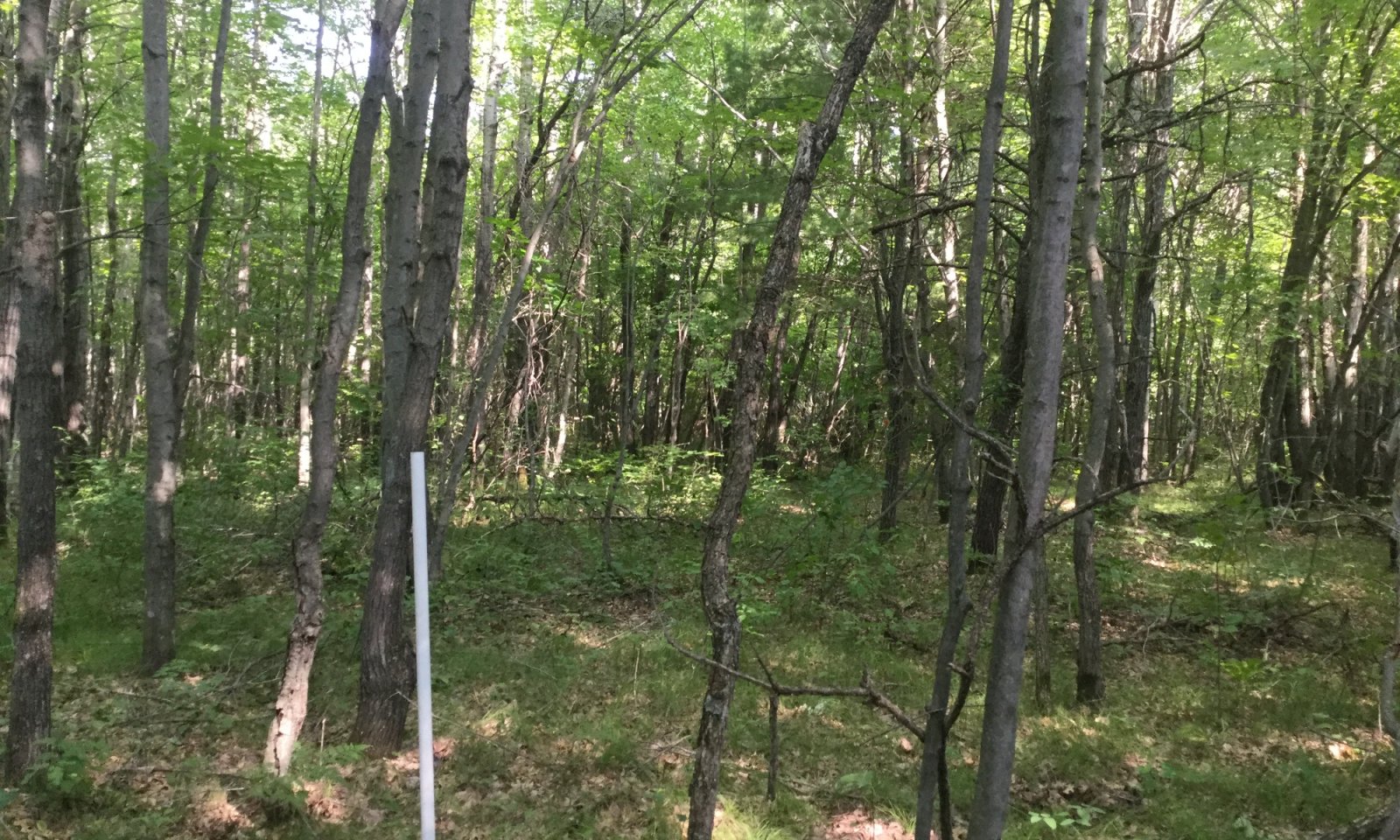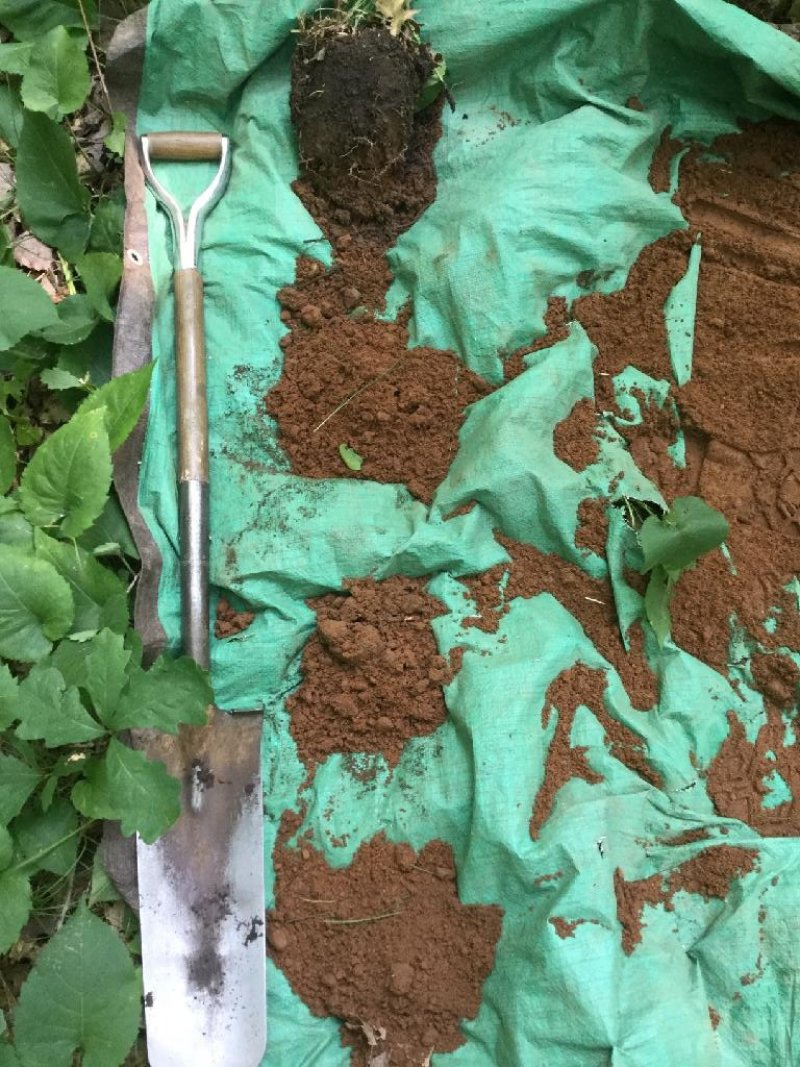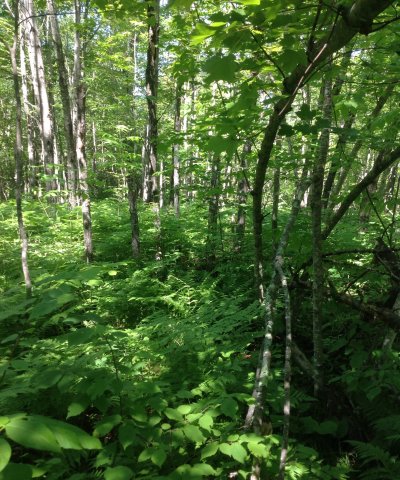

Natural Resources
Conservation Service
Ecological site F091XY012WI
Loamy Upland
Last updated: 9/27/2023
Accessed: 12/18/2025
General information
Provisional. A provisional ecological site description has undergone quality control and quality assurance review. It contains a working state and transition model and enough information to identify the ecological site.
MLRA notes
Major Land Resource Area (MLRA): 091X–Wisconsin and Minnesota Sandy Outwash
The Wisconsin and Minnesota Sandy Outwash MLRA is the most extensive glacial outwash system in the northern half of Wisconsin. The total land area of the Wisconsin portion is just under 1.4 million acres (2,170 sq miles). The northern half is a former spillway for Glacial Lake Duluth. The flowing meltwater from the draining lake has left behind thick deposits of drift and carved a terraced river valley now occupied by the St. Croix and Bois Brule Rivers.
The northeastern section – the Bayfield hills – is a collapsed outwash plain where drift deposits are thick. Lacustrine materials from Glacial Lake Duluth line the northeastern tip. Moving southwest, the landscape transitions into a large pitted outwash plain. This is an area of extensive kettle holes, and, where the underlying till is less permeable, kettle lakes with some interspersed morainic hills and ridges. The glacial drift deposits are thinner in the southwestern section, although there is still no documented surface bedrock within this MLRA.
The St. Croix and Bois Brule rivers share a channel that lines much of the northwestern border of this MLRA. In some places, the underlying reddish-brown sandy loam till of the Copper Falls Formation is exposed along cut riverbanks, though most of it is covered by a mantle of outwash. Glacial lakes deposited pockets of fine-textured lacustrine materials, most of which were washed away or buried by glacial outwash and meltwater flowing through the channel. East of the channel, some of the silty and clayey lakebed deposits are found near the surface, where they impede drainage and contribute to the formation of extensive wetlands.
Historically, the area supported extensive jack pine (Pinus banksiana), scrub, and oak forests and barrens. The northern portion also supported stands of red pine (Pinus resinosa) and eastern white pine (Pinus strobus) as well. Marsh and sedge meadow, wet prairies, and lowland shrubs dominated the extensive wetland complexes in the southern tip of this MLRA (Finley, R., 1976).
Classification relationships
Relationship to Established Framework and Classification Systems:
Biophysical Settings (Landfire, 2014): This ES is largely mapped as Laurentian-Acadian Northern Hardwoods Forest, Boreal Aspen-Birch Forest, and Eastern Cool Temperate Row Crop
Habitat Types of N. Wisconsin (Kotar, 2002): The sites of this ES keyed out to two habitat types: Pinus strobus-Acer rubrum/Vaccinium-Amphicarpa (PArVAm); Acer saccharum/Athyrium (AAt)
WDNR Natural Communities (WDNR, 2015): This ES is most similar to the Northern Mesic Forest community.
Hierarchical Framework Relationships:
Major Land Resource Area (MLRA): Wisconsin and Minnesota Sandy Outwash (91X)
USFS Subregions: Mille Lacs Uplands (212Kb)
Small sections occur in the Bayfield Sand Plains (212Ka) subregion
Wisconsin DNR Ecological Landscapes: Northwest Lowlands, Northwest Sands
Ecological site concept
The Loamy Uplands ecological site is found most commonly on the northwest border of MLRA 91X near the St. Croix River on outwash, lake, and till plains, moraines, stream terraces, hillslopes, and river valleys. These sites are characterized by moderately deep to very deep, moderately well to well drained soils formed in loamy deposits. Some sites have a sandy mantle or are underlain by sandy outwash. Precipitation and runoff are the primary sources of water. Soils range from very strongly acid to slightly alkaline.
Historically, this Ecological Site was occupied by forest communities dominated by various mixtures of pine and oak species. Specific mixtures were largely dependent on frequency and severity of disturbances, particularly fire and subsequent seed-bed conditions and availability of seed sources. White pine (Pinus strobus) was the most persistent species in forest communities due to its biological and ecological characteristics of great longevity, resistance of old trees to fire damage and moderate tolerance to shade by seedlings and saplings. Red oak (Quercus rubra) and white oak (Q. alba ) were often present as associate species. Virtually all stands on this Ecological Site were harvested during the late 19th and early 20th centuries and post-logging fires were almost universal. Today’s forests are dominated by any mixture of, aspen, red oak, white oak, red maple (Acer rubrum) and white pine. Red pine (Pinus resinosa) plantations also are common. In some stands there is sporadic occurrence of species typical of mesic communities, such as ironwood (Ostrya virginiana), basswood (Tilia americana), ashes (Fraxinus spp.) and sugar maple (Acer saccharum), indicating that this ES represents a transition on the soil moisture/nutrient gradient from Dry to Dry-Mesic Forest Habitat Types.
Loamy Uplands differ from sandy and clayey uplands based on its loamy textures. Loamy textures have a higher pH and available water capacity than sandy materials, but lower than clay materials. The moderately well and well drainage differs Loamy Uplands from other loamy sites.
Associated sites
| F091XY005WI |
Wet Sandy and Loamy Lowland These sites occur on depressions and drainageways on outwash plains and lake plains. They primarily form in sandy outwash are subject to some flooding. Soils are very deep and poorly or very poorly drained. They are saturated for much of the year. They are much wetter and occur lower on the drainage sequence than Lamy Uplands. |
|---|---|
| F091XY007WI |
Moist Sandy and Loamy Lowland These soils formed in sandy outwash, sandy lacustrine deposits, sandy eolian deposits, or loess that is sometimes underlain by sandy or loamy till. Soils are very deep and somewhat poorly drained. They are wetter and occur lower on the drainage sequence than Loamy Uplands. |
Similar sites
| F091XY004WI |
Terrace These sites occur on stream and strath terraces. They are defined by their landforms, not by particle size class or drainage class. These sites were once floodplains but are no longer subject to frequent flooding. Terrace sites with loamy particle size classes and good drainage will support vegetative communities similar to those of Loamy Uplands. |
|---|---|
| F091XY011WI |
Sandy Upland These soils formed primarily in sandy outwash or sandy eolian deposits, but some sites formed in sandy lacustrine or loamy alluvium underlain by sandy outwash. They occupy similar landscape positions as Loamy Uplands and are also moderately well to somewhat excessively drained. Sandy Uplands have coarser particle size classes. This difference is reflected in the vegetative communities, with Loamy Uplands supporting communities with higher nutrient requirements. |
| F091XY013WI |
Clayey Upland These sites form in clayey lacustrine deposits, often with a sandy or loamy mantle. They occupy similar landscape positions as Loamy Uplands and are also moderately well to somewhat excessively drained. Clayey Uplands have finer particle size classes. The two sites can support similar vegetative communities. |
Table 1. Dominant plant species
| Tree |
(1) Quercus rubra |
|---|---|
| Shrub |
(1) Corylus |
| Herbaceous |
(1) Eurybia macrophylla |
Click on box and path labels to scroll to the respective text.
Ecosystem states
| T1A | - | Stand replacing disturbance e.g., blow-down and fire, or clear-cutting followed by fire. Regeneration by natural seeding or planting. |
|---|---|---|
| R2A | - | Time, natural succession by white pine and red maple. |
| T2A | - | Grazing by livestock. Disruption of tree regeneration and ground vegetation. |
| T2B | - | Removal of natural vegetation, plowing, fertilizing, irrigating, planting agricultural crops. |
| R3A | - | Removal of livestock from stands. |
| T3A | - | Removal of natural vegetation, plowing, fertilizing, irrigating, planting agricultural crops. |
State 1 submodel, plant communities
| 1.1A | - | Light to moderate intensity fires, reducing or eliminating advance tree regeneration. |
|---|---|---|
| 1.2A | - | White pine and red oak regeneration re-establishes. |
State 2 submodel, plant communities
| 2.1A | - | Red pine seed into the successional communities of mixed oak |
|---|---|---|
| 2.1B | - | Repetitive clearcutting and burning of earlier stands |
| 2.2A | - | Disturbance e.g., blow-down and fire, or clear-cutting followed by fire. Regeneration by natural seeding or planting. |
| 2.3A | - | Time without disturbance, natural succession |


